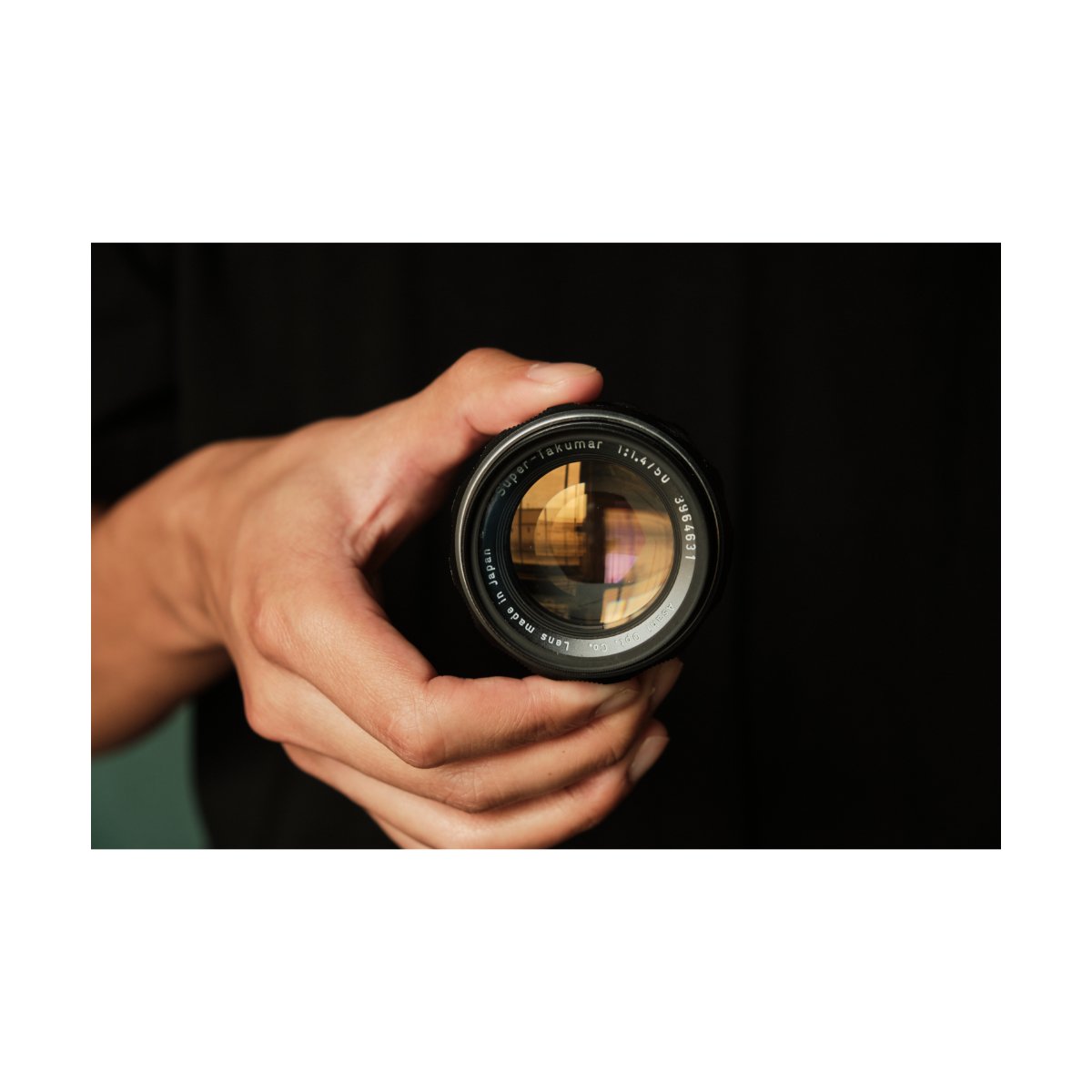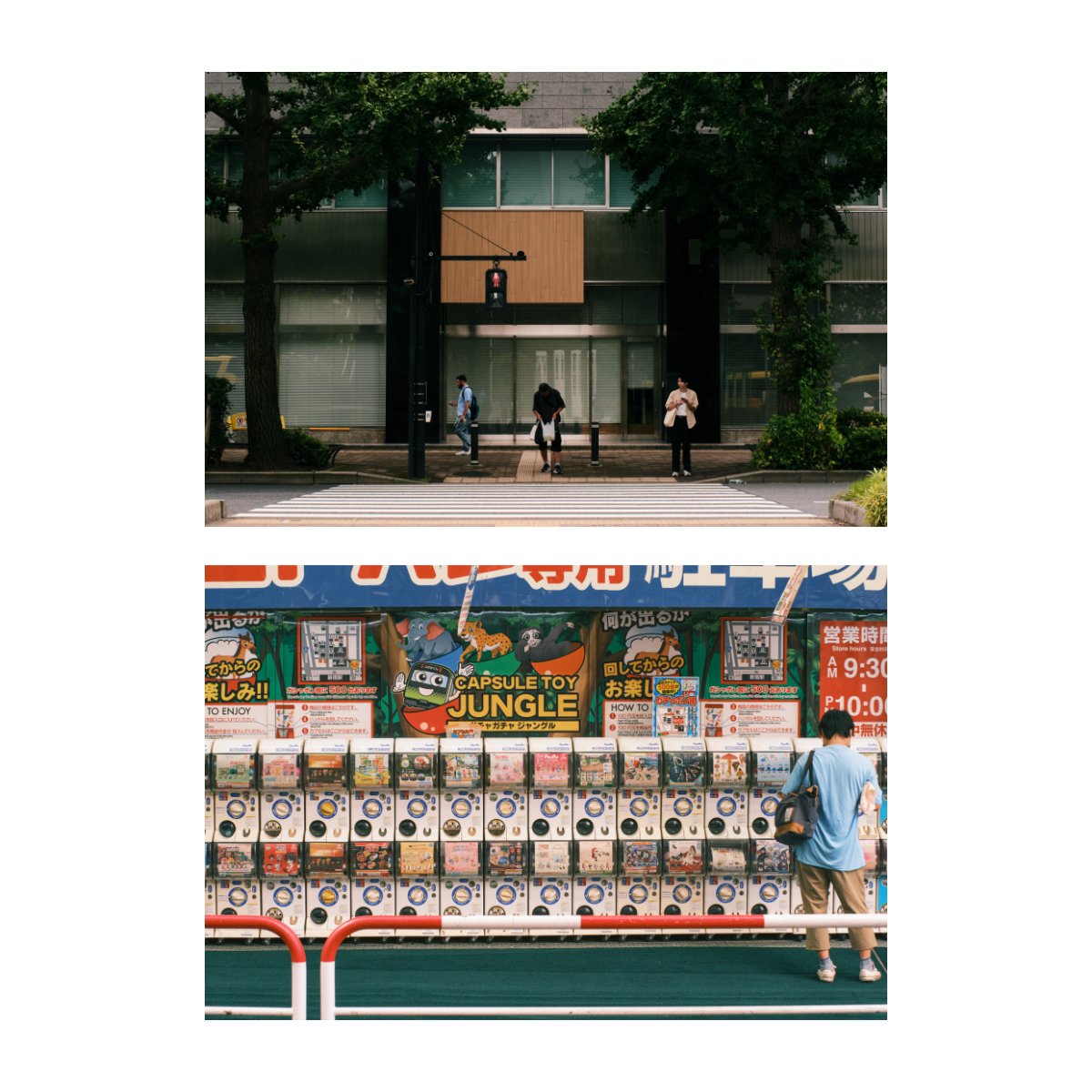The Legendary Vintage Lens I Found In Tokyo (vintage shopping & street photography)
I’ve always liked the idea of adapting vintage lenses to my modern digital cameras.
Manual lenses in general force you to slow down and take photography at a different pace - and that attention to detail when nailing a shot can make you better.
There are also many old lenses that have imperfections and characteristics of their own, giving them and the resulting photos a charm that is hard to find in modern lenses.
Of course not every vintage lens is good, and each one has problems of their own - but if you find the right one, it can be like striking gold.
Reputable vintage lenses that are in good condition are getting rarer by the day, because there’s a fixed amount in existence and no new ones are getting made.
But the simple idea that an old, worn down, seemingly irrelevant lens is not only useful, but valuable in this day and age, is very cool to me.
So when I found this lens during my trip in Tokyo, I couldn’t resist.
Today I’ll be sharing the story behind this lens, and of course the many photos I’ve taken with it.
Let’s get started.
Vintage Shopping in Japan
Japan is not only a great place for photography but also a hub for camera enthusiasts.
They’ve got a large vintage market and are notoriously known for taking good care of their gear.
So, you can wander around into little hole in the wall camera shops and scrounge for old gems.
If you get lucky, you’ll find something worth buying.
In my time in Tokyo, I did a little bit of that, but found it to be more trouble than it was worth.
I’m not particularly a “fixer upper”, so getting an old piece of gear and making it new again isn’t really my thing.
Plus, all the “good gear” was priced fairly, as most of the stores knew the value of their cameras.
And anything that’s not, you’ll find in the discount section.
So it’s up to you if you wanna do the digging - you will see a lot of cool cameras though.
As I walked around and explored the city I mainly focused on street photography - capturing moments and perspectives that stood out to me.
It was then, that I found this lens, in one of the most unexpected of places.
In the Loft store in Shibuya was a camera section - filled with vintage lenses and other reskinned film cameras for decent prices.
“Loft” is just a general goods store, so I was looking around for notebooks and pencils, not expecting anything camera related.
But to my surprise, I saw a lens I actually recognized:
The Asahi Super Takumar 50mm f1.4.
Asahi Super Takumar 50mm f1.4
The Pentax Asahi Super Takumar was a series of lenses released in the mid-1960s to early 1970s with the intention of competing with Zeiss, the top lens makers at the time.
These lenses have become quite renowned, earning the nicknames: “Zeiss Killer” and “Planar Killer”.
The first incarnation was an 8-element lens, which was apparently very costly and rumored to lose money on every lens made.
Because of this, they dialed it down a bit and made a 7-element Super Takumar, which is the one I found.
You can differentiate the two by looking at the mark on the lens.
The little red mark on the left of the 4, indicates it’s a 7-element version, while the 8-element version has a mark on the right.
Another interesting thing about these lenses is that the 7-element versions contain thorium and are radioactive, while the 8-element versions do not.
The thorium was said to improve image quality and are apparently not dangerous for photographers to use.
It does cause a yellowing of the glass if left untreated for a long enough period of time, although supposedly you can fix this by leaving it under a lamp.
So if you’re unsure of which version you have, you can check the rear element.
Any signs of yellowing means it’s a 7-element lens.
Now I’ve heard and read stories about this lens before, but I never thought I’d have the opportunity to actually own one.
Finding a good vintage lens online can be quite the hassle, as you have to make sure it’s of good quality without being able to hold it.
And a lot of sellers jack up the prices because they know it’s worth.
So maybe this is just buyer’s justification, but running into this lens made me feel like I had to buy it.
It wasn’t a lens I needed or even wanted to be honest, but I knew about it and figured it’d be really unlikely for me to find another one in this condition at this price.
It only had a few scratches on the manual focus ring, but otherwise was in really good condition.
And I figured I could always sell it back at home if I didn’t like it.
That’s me justifying the purchase…
All in all, it ran me about $100, tax-free after converting to USD, which sounds like a no brainer in retrospect - but if you know me, you’ll know I have a spending aversion for things I don’t need.
Street Photography and My Experience
The Super Takumar lenses are built for the M42 mount, so depending on what you use, you’ll need an adapter.
In my case, I shoot Fujifilm, so I had to adapt the lens to aps-c.
This meant that instead of a standard 50mm focal length, it was now roughly a 75mm.
It’s not ideal for my kind of street photography, but I figured I’d make it work somehow.
Again, justification, right?
For the rest of my time in Japan, I only used this lens about once or twice.
I still had my main setup which I used to get the shots I had in mind, so this was just a lens to experiment and have fun with.
I paired it with the Fujifilm X-Pro which made for a cool vintage retro, but modern setup.
I also figured, because I’d be manual focusing, I’d have to slow down anyways, making the X-Pro3 a good choice to carefully compose my images through the viewfinder.
Here are some interesting things I’ve learned about the lens when shooting with it.
Focal Length Experience
A 75mm eq was a neat change of pace.
I’m typically used to and hard wired for the 35mm eq of the x100vi, so being able to take photos from afar was fun.
It was a bit awkward at first, but over time I found myself understanding where I needed to be to get the shots I wanted.
I think that learning different focal lengths teaches you an invaluable perspective when it comes to photography.
The biggest thing I learned from this focal length is that:
I could and should take my time.
There was no need to be as quick with it because I have more time when shooting from afar.
And being able to pick out subjects from a distance, rather than photograph what is available in your immediate vicinity is a different way of looking at the world.
Manual Focus Experience
Now when it comes to manual focusing, I did find myself having trouble.
It meant I had to slow down, adjust, and make sure I nailed focus properly.
And many of the pictures I took were out of focus.
This was in part due to the wide aperture of this lens.
F1.4 is really wide - much wider than I expected.
Not only does this affect how bright your image is, but it makes it even harder to nail manual focus.
It can be difficult at times to know if your shot is in focus, even with the highlights on in your camera.
Plus, sometimes you don’t have the time to rotate the focus ring to match moving subjects.
This means a lot more anticipation for street photographs, rather than reaction.
You need to see the shots happening almost a step ahead so you can get everything right before it happens.
Otherwise, you’ll just be too late.
Later on in the day, I raised my aperture to about f4, which made things much easier.
F4 is a solid aperture and allowed me to get enough of my subjects in focus so I could fire without slowing down.
Plus I don’t have to turn the ring around as much because it covers a bigger range of focus.
Image Quality, Sharpness, Characteristics
As I explored Tokyo, I mainly focused on people, perspectives, and things that interested me.
And going back, looking through the photos, and editing them, I was quite pleased with the results.
The great pleasure of shooting with vintage lenses are the unique looks you’ll get.
I find vintage lenses to have a bit more of a bloom to them.
They’re not as clinical or clean as modern digital lenses - and that’s a good thing.
This adds a bit of “character” and touch compared to a normal lens.
I’m hesitant to say it gives more of a “film look”, but that’s probably a good description.
You’ll notice the difference between some of the images I took with the Takumar versus my modern lenses.
Although not a direct side by side, you can tell there’s a bit of a difference to them.
Everything looks softer, more flowerly, and feels a tad more nostalgic.
And by “softer” I don’t mean the lens sharpness, I mean the feeling of the images.
Because all in all, the Takumar is still really sharp.
I’m not one to harp on image sharpness, but this is one of the first things I noticed.
I’ve shot with several different vintage lenses in the past and this is one of the sharper ones.
Even when shooting wide open, as long as your subjects are in focus, they’ll be somewhat sharp - it will be better at F4 though.
And because it’s a 50mm lens, the compression and falloff from your subjects is really nice.
You’re not gonna get some fancy swirly bokeh like the Helios 44-2, but that’s okay.
I’m not one to be crazy about bokeh anyways…
Final Thoughts - Was it Worth It?
So overall, I had a good time shooting with this lens and find it to be a great alternative to the lenses I’m used to.
Sometimes the look from my normal lenses can get a bit boring and this is a great way to mix it up.
And it doesn’t lag or lose on image quality - rather it has a bit of a unique charm to it.
I do wish it was a bit wider, because the focal length is tighter than I’d like, especially since I shoot aps-c - but that can’t be helped.
So I still need to use and test it more in everyday scenarios to see what I can do with it.
For a lens I’ve heard so much about, but never thought I’d get, I’m pretty happy to finally own one.
And I’ll update you guys as I continue to use and learn more about this legendary vintage lens.
Let me know your thoughts and if you have any experiences with the Takumar in the YouTube comment section.
And if you want to learn more and build a solid foundation with photography, check out Photography Essentials - it’s free.
You can also help support me by adding to the travel fund or by grabbing a copy of “The Sinking Sun”, my latest zine.
Thanks for reading, have a great day.















